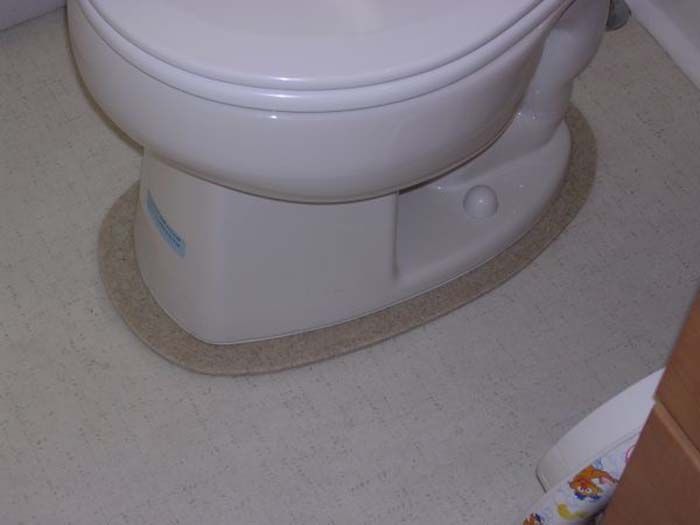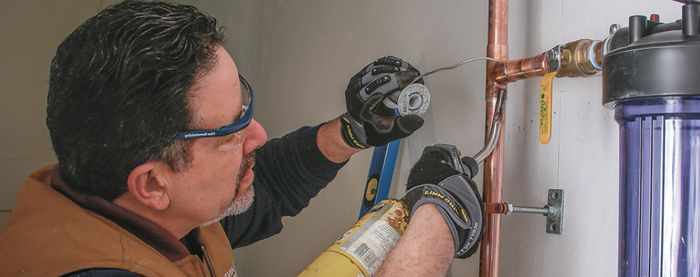Should You Seal the Joint Where a Toilet Meets the Floor?
Yes, a bead of sealant around the base of a toilet is a necessity.

Q:
I was taught that it was bad practice to apply a bead of sealant around the base of a toilet where it meets the bathroom floor because any seepage under the toilet would be trapped and cause unseen damage to the floor structure. That said, I like the clean look of a bead of caulk around porcelain fixtures. Is there really a threat of trapped water?
Peter, None
A:
Plumber Mike Lombardi says: It is not only OK to apply a bead of sealant around the base of a toilet(see “Install a Toilet,” FHB #237), but it’s also required by the International Plumbing Code and the International Residential Code.
A plumber’s main responsibility is to provide sanitation. We design and install the drain, waste, and vent systems that prevent germs and bacteria from infiltrating a house; a properly sealed toilet bowl is part of that system.
One risk is that condensation on the outside of the bowl during hot summer days can drip between the toilet and the floor. An even bigger risk is if the toilet overflows, allowing soiled water to wick in around the base—the perfect spot for growing some of the nastiest germs on the planet.
A correctly installed toilet depends on proper floor prep and the standard practice of good workmanship when connecting the bowl to the floor flange. The toilet floor flange should always be installed on top of the finished floor; I prefer to seal the bowl with Phenoseal caulk, which cures to a flexible, durable watertight finish. Always test-flush a newly installed toilet multiple times before sealing it, just to rule out the chance of a hiccup in the installation process.



View Comments
I personally disagree with caulking the floor/toilet joint- if the gasket has failed, I want it to be obvious. As a compromise, one can caulk the front & sides, but leave a few inches in the back open.
If the finish flooring is waterproof (as it should be in a bathroom), I advocate caulking it to the toilet flange, so leaked water can't get to the sub-flooring and rot it (even though I often make money repairing dry rot in bathroom floors.) If I'm replacing a toilet, I use a putty knife and the old wax ring to seal the gap between the finish flooring and the flange. Mildly messy, but, hey, that's why plumbers get the big bucks.